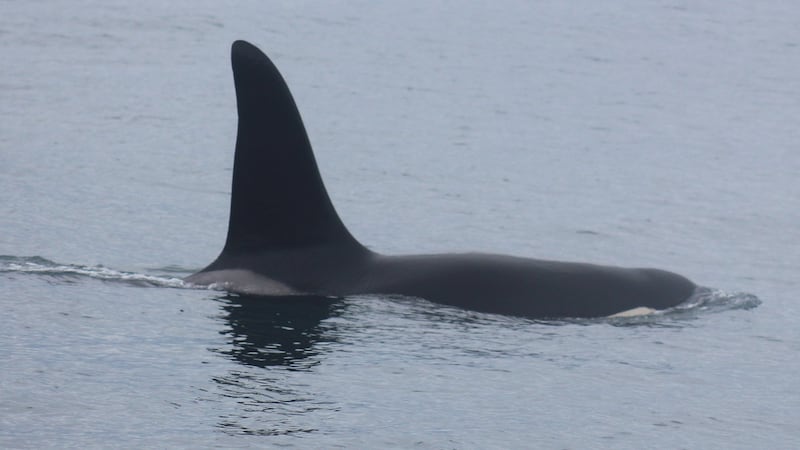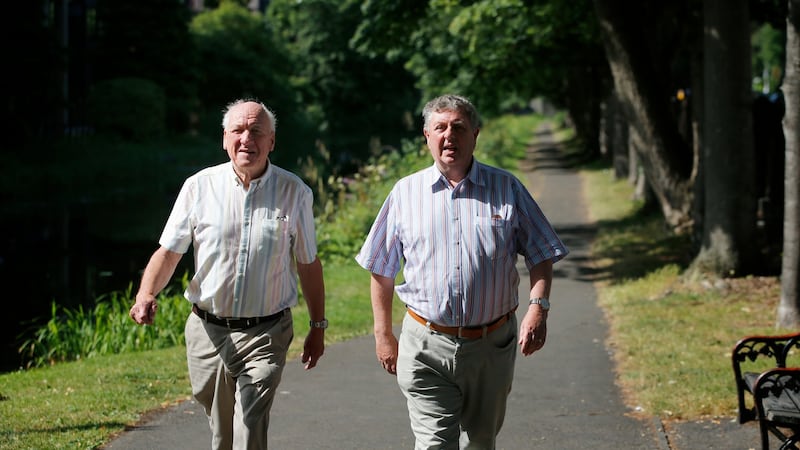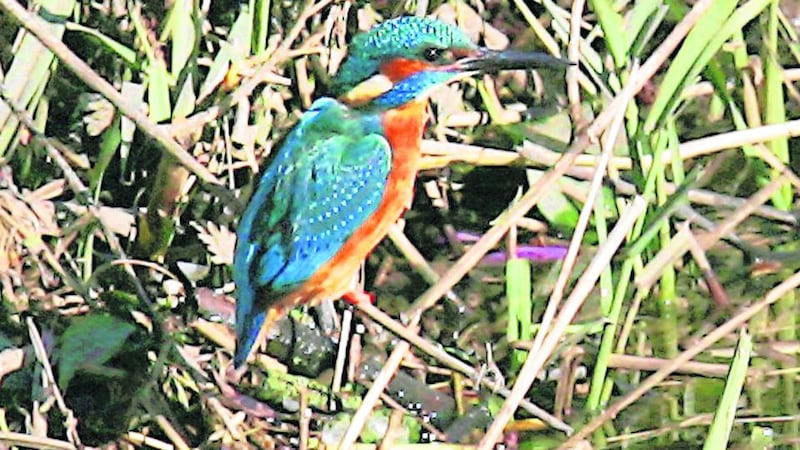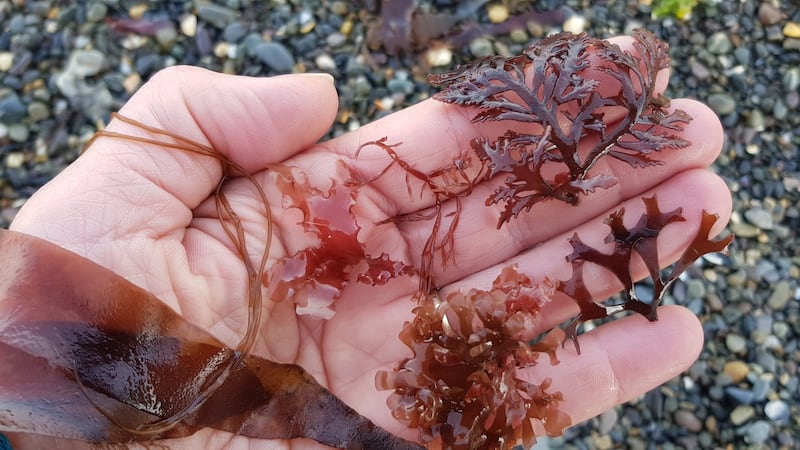Learn about Ireland’s first woman botanist, spot whales and dolphins around the coast, discover the history of the Royal and Grand Canals, explore the Rivers Dodder and Tolka in Dublin and find out about the fishing folklore of Donegal – just a sample of what you can do during National Heritage Week, which runs from today until next Saturday, August 24th, celebrating the cultures, customs and places that make us who we are.

With almost 2,000 events all over Ireland, it offers locals and visitors a chance to celebrate our natural and built heritage. This year’s theme, Pastimes/Past Times, encourages us to take a stroll through history to discover how our pastimes today have been shaped by hundreds of years of storytelling, craft, sport, music and much more.
Wherever you live, there will be something of interest, and most activities are free. Join a guided walk, go to a local history talk, or partake in a craft workshop to learn a new skill. Check out heritageweek.ie for full events listings, and see below for some of our highlights.
All Island Whale Watch Day
Around the coast; Saturday, August 24th, 2-5pm; iwdg.ie
Sightings of minke and humpback whales and other species of whales and dolphins along the Irish coast earlier this year is a good omen for this year's All Island Whale Watch day.

The annual land-based event aims to raise awareness of the 25 species of cetaceans (porpoises, dolphins and whales) in Irish waters. The event also gives the Irish Whale and Dolphin Group (IWDG) researchers a snapshot of whale and dolphin activity around the Irish coast.
Ireland was designated as a whale and dolphin sanctuary in 1991. But Padraig Wholley, sightings officer with the IWDG, says that while the designation is important, it remains aspirational.
“What we really need are designations of swathes of coastline along the south and southwest which are important inshore feeding areas for humpback and fin whales,” he says.
“We also need to keep the pressure on Government to protect the remaining stocks of critically important small forage fish [such as sand eels and sprat] which larger fish, sea birds and cetaceans feed on.”
This year’s 19 locations for the All Island Whale Watch Day are Clogherhead, Co Louth; Howth Head, north Dublin; Killiney Bay, south Dublin; Bray Head, Co Wicklow; Wicklow town, Co Wicklow; Hook Head, Co Wexford; Helvic Head, Co Waterford; Galley Head, Co Cork; Valentia Island, Co Kerry; Clogher Head, Co Kerry; Loop Head, Co Clare; Black Head, north Clare; Downpatrick Head, Co Mayo; Mullaghmore Head, Co Sligo; Bloody Foreland, Co Donegal; Inishowen Head, Co Donegal; Portrush, Co Antrim; Portmuck, Co Antrim; and Bloody Bridge, Co Down.
Bring binoculars or a spotting scope and dress appropriately for outdoor weather conditions. While there is no guarantee that you’ll see whales, dolphins or porpoises, there were sightings at 14 of the 19 sites last year.
Guided walks on Dublin’s Royal and Grand Canals
Tuesday, August 20th, to Sunday, August 25th; royalcanal.ie
Local historian Peter Clarke has been leading walks of the Royal Canal in Dublin for the past 30 years. His colleague Derek Whelan leads walks on the Grand Canal, and both men are a wealth of information on the industrial heritage of these still navigable waterways, whose original role as transportation routes has long since disappeared.

“They were built when canal mania was at its height in Britain to encourage industry in Ireland, but they didn’t really succeed,” says Clarke. The building of the Royal Canal between 1790 and 1817 ran into lots of financial difficulties and mostly brought cattle, turf and potatoes to the city, and coal to the country towns and villages.
The Grand Canal – built from 1758-1796 – was more successful as a transport hub, carrying Wedgwood china, coal, steel, grain and timber.
Nowadays, people enjoy walking along the towpaths which stretch for 145km along the Royal Canal, from the River Liffey in Dublin to Cloondara on the Shannon, and a similar distance along the Grand Canal, from the Grand Canal Basin in Dublin city to the River Barrow.
On their 90-minute walks, Whelan and Clarke speak about the construction of the canals, the historic mills and bridges, and the birds and flowers along the canal banks. See royalcanal.ie for times and meeting points. Peter Clarke's book Walking the Royal Canal also has details of five short walks between Dublin and Maynooth, in Co Kildare.
Rivers as Havens: Walks along the Rivers Dodder and Tolka
Thursday, August 22nd, and Friday, August 23rd, 8pm
Lorraine Bull, the newly appointed biodiversity officer at Dublin City Council, wants people to slow down and have a close encounter with the natural world on these evening walks along the Rivers Dodder and Tolka. "Dusk is a good time to see insects and otters on the river," she says.

Bull’s aim is to highlight the importance of rivers and their banks for biodiversity in the city. “There are kingfishers and dippers on the Dodder, and we should be able to see dragonfly larvae too. The rivers have trout, minnows and common rudd, and the banks are nesting sites for moorhens, coots, ducks and various moth species,” she says.
Towards the end of the walks, Bull hopes participants will be able to hear the echo-locations of bats (weather permitting). "It's amazing how easily you can connect with nature on a river bank and, by doing so, it helps people look after our rivers better." To book, email biodiversity@dublincity.ie or call 01-2223325.
Traidisiúin na Farraige/Traditions of the sea
Glencolumbkille, Co Donegal; Tuesday, August 20th, 7.30pm; bilingual presentations; oideasgael.ie
The seafaring expeditions off the coast of Donegal shaped the storytelling, sean-nós songs, traditional tunes, and even the way Irish was spoken. The fishing networks also resulted in an exchange of songs and stories across the west of Ireland, and to fishing communities across Europe.
Aisling Ní Churraighín is a PhD folklore researcher at the National University of Ireland in Galway. She says European and American music collectors, anthropologists and linguists came to study these traditions from the 1930s onwards.
“There are many elements to it. It has shaped local people’s world view through social rules and superstitions,” she explains.
For example, there were also many heroic stories about facing storms. “One of these includes throwing a knife against a large wave to break it. Other practices included women emptying water out of a well in an attempt to settle the currents during stormy weather while their husbands were out fishing. Women would also not wash their hair while their husbands were out fishing,” explains Ní Churraighín.
Local fishermen will speak about the myths and traditions at the Theach an Iascaire sa Chlachán (the Fisherman’s Cottage) at the Folk Village at 7.30pm. This will be followed by a panel discussion on fishing lore and practices with folklore experts, Aisling Ní Churraighín and Dr Seosamh Mac Muirí, at Oideal Gael.
Ellen Hutchins Festival
Around Bantry Bay, Co Cork; today until Saturday, August 24th; ellenhutchins.com
Ireland's first woman botanist, Ellen Hutchins (1785-1815), grew up in Ballylickey House in west Cork, the second youngest in a family of 21 children (six of whom survived). She was the first person to identify many lichens, mosses and seaweeds in Bantry Bay. She shared the intricate drawings of her discoveries with august foundations such as the Linnean Society of London, the world's oldest biological society.

“She was mainly self-taught in botany and botanical art but she was a serious botanist who discovered some of the Lusitanian species unique to southwest Ireland, northwest Spain and northern Portugal,” says Clare Heardman, the National Parks and Wildlife Service conservation ranger in west Cork.
In her short life, Hutchins also shared samples and fine botanical drawings of her discoveries with James Mackay, whose Flora Hibernica (1836) became the first complete list of the flora of Ireland. It wasn’t until the publication of The Wild Plants of Bere, Dursey, Whiddy and Other Islands in Bantry Bay in 2013, that a more comprehensive a list of plants of the area was made.
In 2015, Heardman, Madeline Hutchins (Ellen’s great-great-grand niece) and local historian Angela O’Donovan started a festival in her honour. “We began by putting up a plaque on her unmarked grave in Garryvurcha and organising a talk and a walk, all of which raised local pride,” says Heardman.
Now, five years later, the Ellen Hutchins Festival in Bantry Bay has an expansive programme including seaweed identification workshops on Whiddy Island, a lichen walk in Glengarriff Woods, and botanical art demonstrations in Bantry House and Future Forests in Kealkil.
Madeline Hutchins has also written a short biography of her famous great-great grand aunt, Ellen Hutchins – Botanist of Bantry Bay, which she will talk about at the festival.
"Bantry Bay is the co-star of her story. Ellen Hutchins was the right person in the right place at the right time. She was incredibly industrious and shared her specimens widely so there are hundreds of them around the world, featuring in collections in New York as well as Trinity College Dublin and University College Cork, " she explains.
Best of the rest
The History of Cricket in Kilkenny Kilkenny may be the hurling capital of Ireland, but 100 years ago, cricket was by far the more popular game in that county. Michael Dwyer, author of The History of Cricket in Kilkenny, explains how there were 50 cricket teams in towns and villages across the county at its peak in 1896, even though the GAA was well up and running at the time. It continued to be played right up to the 1950s in some parts of the county. Find out more at his talk at 11am on Saturday, August 24th, in the Parade Tower of Kilkenny Castle by emailing kilkennyguides@opw.ie.
Biodiversity talks and walks at Altamont Gardens, Co Carlow Wildlife expert and former Green Party TD Mary White will explain how people can encourage birds and the bees into their gardens and farms in these talks on Ireland's biodiversity. Visitors can also enjoy walks through these wonderful informal gardens, which include a path along the River Slaney. Monday, August 19th, Wednesday, August 21st, and Friday, August 23rd, at 2pm. Email altamontgardens@opw.ie.
Echoes of the Past Craft demonstrations and workshops in Loughrea, Co Galway Held as part of the Loughrea Medieval Festival, these demonstrations and workshops offer people of all ages a chance to get to grips with butter and cheese making, weaving, basket and glass bead making and other medieval skills. To join workshops on Sunday, August 25th, email loughreamedievalfestival@gmail.com or call 086-0522509. Archery and medieval combat displays will also be held on the day.
Wildlife walks in Merlin Woods, Galway city The Friends of Merlin Woods have organised free guided walks highlighting butterflies (tomorrow at noon), bats (Monday, August 19th, at 9.15pm) and birds (Friday, August 23rd, at 7.30pm). There will also be a heritage trail for children through the woods on Wednesday, August 21st, at 1pm. Email friendsofmerlinwoods@gmail.com or call 085-2484380.
Bell-ringing tour of St Patrick's Cathedral, Dublin Discover the history of the Bell Tower and watch a demonstration of bell ringing on six bells. Today and Saturday, August 24th, at 10am, noon, 2pm and 4pm. Advance booking essential; email education@stpatrickscathedral.ie or call 01-4539472.
Totally Terrific Tomato Festival at the National Botanic Gardens A chance to see more than 200 varieties of tomatoes in this green oasis close to Dublin's city centre, from today until Sunday, August 25th (admission free). Talks will focus on plant-related hobbies (mushroom collecting, jam making, exotic plant growing, etc) today and Saturday, August 24th, at 2.30pm, €5; botanicgardens.ie.
Pastimes from Past Times at 14 Henrietta St, Dublin 1 Grandparents are invited to bring their grandchildren to play games and chat about the games they used to play. The recently opened museum explores the life of one of Dublin's finest mid-18th century townhouses which was divided into tenements to house the city's working poor in the late 19th century. Thursday, August 22nd, and Friday, August 23rd, at 11.15am; 14henriettastreet.ie.
Irish Landmark Trust Buildings Open Day A rare chance to see inside carefully restored historic buildings including Parade and Garrison Houses, Elizabeth Fort, Barrack Street, Cork; and Annes Grove Miniature Castle, Castletownroche, Co Cork. See irishlandmark.com for full list of properties open on Saturday, August 25th, from 10am to 4pm.











